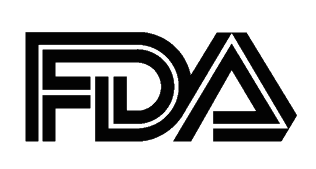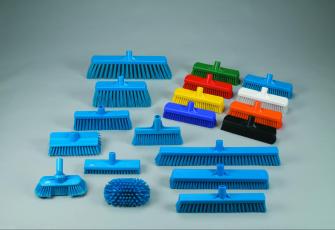How the FDA’s FSMA Effects Your Food Processing Facility
With a small team of inspectors and a limited budget, the FDA has long been primarily a reactionary agency. They often responded only after an outbreak of foodborne illness. With the signing of the Food Safety Modernization Act in 2011, this approach has changed. By working with growers, processors, and suppliers, the FDA seeks to assume a more preventative role.
So, what does this mean for facilities that process foods and beverages? The FSMA gives the FDA broad powers to monitor safety and compliance at food processing facilities. Some of these powers include:
- Increased inspection frequency
- Expanded access to records
- Ability to suspend registrations
- Enhanced product tracing
- Ability to order mandatory recalls

In a nutshell, food processors now have a greater responsibility to avoid cross contamination and the FDA has more power to punish processors that fall short. To this end, the FDA is asking food processors to be more proactive in their approach to identifying and preventing possible sources of cross contamination.
WHAT IS CROSS CONTAMINATION?
Cross contamination occurs any time an intended food product is adulterated. That adulterant could be a pathogen, cleaning chemical, or allergen. While some adulterants, such as cleaning solvents, are obvious, some are harder to spot. What happens if a scoop that is used to measure flour is then used in an area of the facility that produces gluten-free foods?
IDENTIFICATION OF CRITICAL CONTROL POINTS
The key to avoiding cross contamination is to identify likely points of adulteration and either eliminate them, or reduce the risk to an acceptable level. The FDA requires a written Hazard Analysis and Critical Control Points plan. In short, your facility needs to identify each point at which contamination can occur, and implement a control to prevent that contamination.
OVERTHINKING CONTROLS
Sometimes, processors over complicate the controls process. They look to automation and technology to solve a problem that is, frankly, not that difficult. Sometimes, the best solutions are still the simplest. That’s where color-coding fits into your production facility.
Color coding is easily implemented, cost effective, avoids language barriers, and demonstrates a proactive approach to food safety. There is a minimal learning curve with color coding, so you don’t have to worry about training employees on a new system.
HOW COLOR CODING WORKS

Color coding is used in a variety of ways to help ensure food safety. Two popular ways are “zone” and “application” color coding.
- Coding: In zone coding, each area in the facility is assigned a color. The tools and equipment in that zone are given the corresponding color. Those tools are never used outside of the zone, and anyone can immediately see if they are outside of the designated area. For example: a mop that is used in the blue zone, where wheat and grains are used, will never be used in the red zone where gluten-free products are produced.
- Application Coding: Application color coding focuses on the use of the equipment, instead of its location. Purpose-specific colors are assigned to tools and equipment, ensuring that they aren’t used for the wrong purposes. A brush used to clean drains may be colored black, so workers know not to use it to clean processing equipment. With a simple color coding system, you can help prevent items from becoming the source of cross contamination.
SIMPLICITY AND SAVINGS
A color-coding system is easy to implement, requires little or no training, and saves you money in the long run. Not only does it show the FDA that you’re being proactive, it also helps prevent the loss or abuse of tools and equipment. Learn more about the benefits and how to color code in your facility here.


